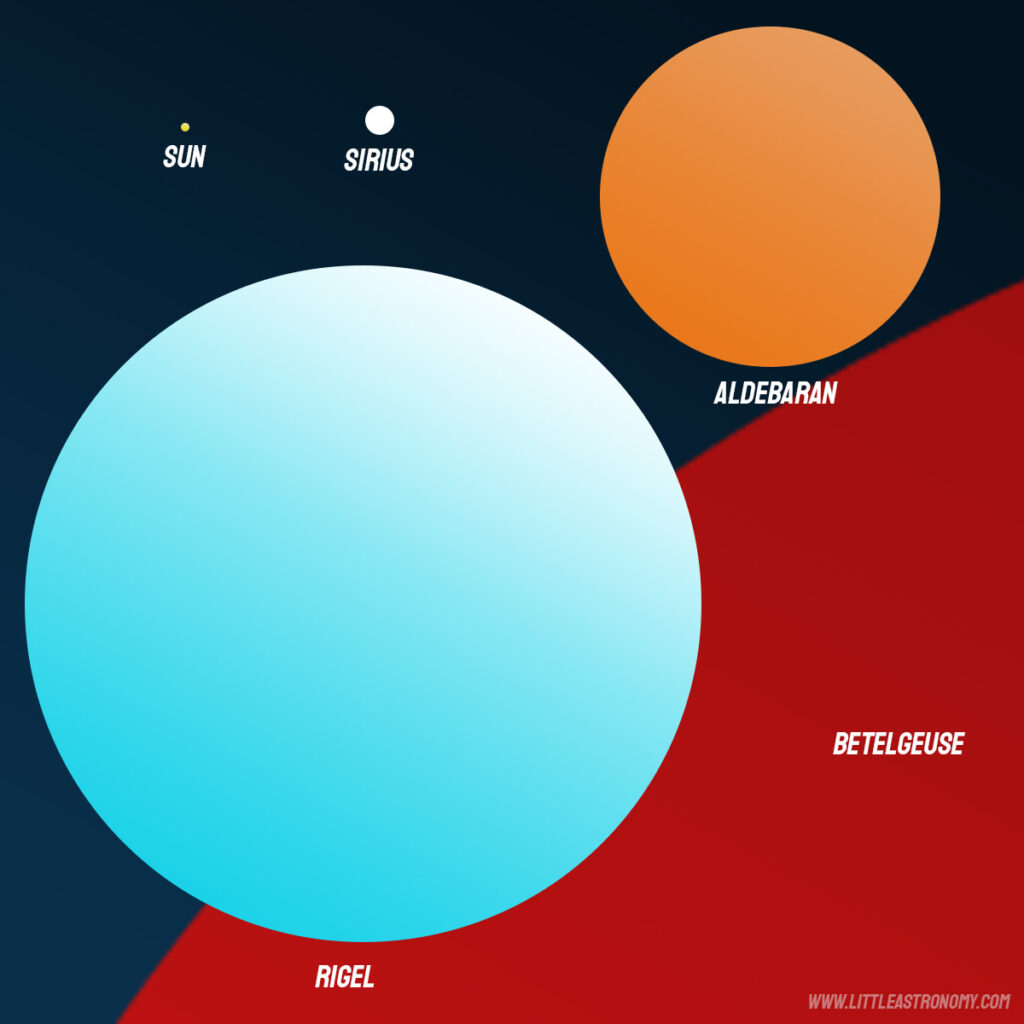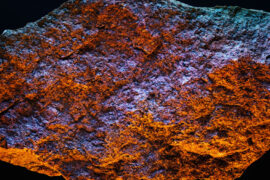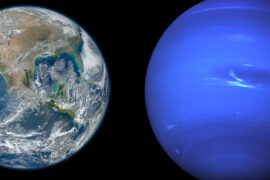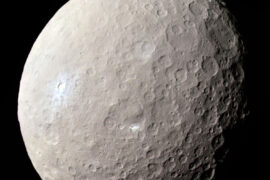Our Sun is the only star that we know of that has a planet with the ability to support life. Humans have looked at it since the beginning of civilization and have written about it, studied it, and even worshipped it. Without the Sun there would be no life on the planet, including us.
So it’s easy to put the Sun on a pedestal and give it a lot of importance. It is literally the center of our little corner of the universe.
But when you zoom out and take a look at the rest of the universe, is it really that special? is it any different than the billions of other stars out there?
Well, spoiler alert. It isn’t. As a matter of fact, our Sun is a very average star. If it was in high school it would be that kid whose name you can’t remember with average grades.
In this article, we’ll take a look at the Sun and compare it against other stars so we can learn about how it ranks in size, type, and other characteristics.
The Sun by the numbers
| Names | Sun, Sol, Helios |
| Age | 4.6 billion years |
| Distance from Earth | 147.11 million km (91.4 million mi) |
| Visual brightness | -26.74 |
| Absolute magnitude | 4.83 |
| Velocity | 251 km/s (orbits the center of the Milky Way) |
| Radius | 696,342 km (109 times Earth’s) |
| Surface area | 6.09×1012 km2 (12,000 times Earth’s) |
| Volume | 1.41×1018 km3 (1,300,000 times Earth’s) |
| Mass | 1.9885×1030 kg (332,950 times Earth’s) |
| Gravity | 274 m/s2 (28 times Earth’s) |
| Temperature (center) | 1.57 × 107 K |
| Temperature (corona) | 5 × 106 K |
| Luminosity | 3.75 × 1028 lumens |
| Rotation period | 25 – 34.4 days |
| Rotation velocity | 1.997 km/s |
Sun vs other stars
There are multiple ways to classify a star. Their age, size, temperature, or brightness as seen from Earth. To better understand how the Sun fits vs other stars let’s take a look at some of these classifications.
The diagram above shows to scale the size of the Sun vs other well-known stars that you can see in the night sky. Even though they look like tiny dots to us from Earth because they are very far away, these stars can be massive and many times bigger than the Sun.
Type
Stars are classified into these main types:
- Main sequence stars
- Red giants
- White dwarfs
- Neutron stars
- Red dwarfs
- Brown dwarfs
This classification is more or less based on the stage a star is at in its life cycle, but it doesn’t mean that every star is going to go through each of them because that is going to depend on its unique characteristics.
Remember I said above that our Sun is quite average? Well, that’s partly because it is a main sequence star. Main sequence stars make up about 90% of the stars in the known universe.
Main sequence stars fuse hydrogen atoms in their cores to form helium. They form when a large mass of dust and gas starts to blend together due to gravity. If there is enough material, the mass collapses and forms a protostar that in turn, if it can reach certain temperatures, starts to generate nuclear fusion and a main sequence star is formed.
Stars like our Sun turn into red giants when they start to run out of hydrogen to burn. They swell because they start to burn helium into carbon instead. When that cycle ends, the atmosphere of the star dissipates and a small part of its core remains. That is a white dwarf. Our Sun will become a red giant in about 5 billion years and a white dwarf in 10.
Other stars that are more massive can explode violently into supernovas instead of swelling up slowly like red giants. What’s left of their core collapses and forms a neutron star which has its own subtypes, like pulsars and magnetars.
Red dwarfs are small main-sequence stars that burn very slowly and will live for a long time. We don’t really know what the endgame looks like for them as none of the red dwarfs that we know of have died yet.
Brown dwarfs are a bit confusing because they aren’t really stars. They are a type of object that is too big to form a planet but that it couldn’t get enough mass to reach fusion and become a star. They also receive the name of failed stars.
Temperature

Based on their temperature, stars can also be classified into spectral types. The sun is a G-type star and here’s how it compares in temperature against other stars.
| Spectral type | Temperature (Kelvin) | Color | Example star |
|---|---|---|---|
| O | 40,000 | Blue | Iota Orionis, Meissa, Altinak |
| B | 20,000 | Blue | Rigel, Upsilon Orionis, Alnilam |
| A | 8,500 | Blue | Vega, Sirius, Deneb |
| F | 6,500 | Blue / White | Procyon, Iota Piscium, Zeta Leonis |
| G | 5,700 | White / Yellow | Sun, Beta Acuari, Mu Herculi |
| K | 4,500 | Orange | Pollux, Arcturus, Sigma Draconis |
| M | 3,200 | Red | Betelgeuse, Beta Andromedae, Chi Pegasi |
As you can see from the table above, when we compare the Sun vs other stars in the higher category temperatures, it turns out it is not that hot. Stars like Rigel, the brightest star in the Orion constellation, can burn at temperatures more than 3 times higher. And Meissa, a blue giant also in the Orion constellation but that it is much farther away, is almost 8 times hotter than the Sun.
The good news for our Sun is that stars with high temperatures tend to live less time as they consume their fuel much faster. A blue giant might live only for 10 million years, while a star like our Sun can live for 10 billion years, which is 1,000 times more.
Size
The size of a star, on average is also correlated to its temperature. Large stars tend to burn much hotter.
The following table compares the size of the Sun to other stars based on their radius and mass.
| Type | Average Radius | Average mass | Example stars |
|---|---|---|---|
| O | 10 | 50 | Iota Orionis, Meissa, Altinak |
| B | 5 | 10 | Rigel, Upsilon Orionis, Alnilam |
| A | 1.7 | 2 | Vega, Sirius, Deneb |
| F | 1.3 | 1.5 | Procyon, Iota Piscium, Zeta Leonis |
| G | 1 | 1 | Sun, Beta Acuari, Mu Herculi |
| K | 0.8 | 0.7 | Pollux, Arcturus, Sigma Draconis |
| M | 0.3 | 0.2 | Betelgeuse, Beta Andromedae, Chi Pegasi |
The numbers above are in relation to the Sun, for example, an O-type star has on average 10 times the radius of the Sun.
As you can see, the Sun isn’t that impressive either in size when you compare it to other stars out there. Please note that those numbers are simply averages, there are some huge stars that are much, much larger than 10 times the Sun. If you want to be impressed, for example, there is the star Stephenson 2-18, which is classified as a very rare red hypergiant. This star is 2,150 bigger than the Sun and it is quite a mystery as it breaks the theoretical barrier of how big we thought a star could be which is around 1,500 times the radius of the Sun. Much closer to us we have Antares, the brightest star in the Scorpius constellation that is about 680 times bigger than the Sun.
Summary
- The Sun is a main-sequence yellow star
- Compared to other stars in the universe, the Sun is extremely average. There is nothing too peculiar about it.
- There are stars that are hundreds and even thousands of times larger than the Sun. They are also much hotter and have more mass.
- There are also many stars that are smaller than the Sun. They don’t shine as bright but they’ll live much longer.








